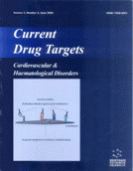Abstract
Platelet adhesion to a damaged blood vessel is the initial trigger for arterial hemostasis and thrombosis. Platelets adhere to the subendothelium through an interaction with von Willebrand factor (VWF), which forms a bridge between collagen within the damaged vessel wall and the platelet receptor glycoprotein Ib / V / IX (GPIb), an interaction especially important under high shear conditions[1]. This reversible adhesion allows platelets to roll over the damaged area, which is then followed by a firm adhesion mediated by the collagen receptors (α2β1, GPVI,...) in addition[2] resulting in platelet activation. This leads to the conformational activation of the platelet αIIb α3 receptor, fibrinogen binding and finally to platelet aggregation. Over the past decades, modulation of platelet function has been a strategy for the control of cardiovascular disease. Lately, drugs have been developed that target the fibrinogen receptor αIIb α3 or the ADP receptor and many of these promising compounds have been tested in clinical trials. However the development of products that interfere with the first step of hemostasis, i.e. the platelet adhesion, has lagged behind. In this review we want to discuss (i) the in vivo studies that were performed with compounds that target proteins involved in different adhesion steps i.e. the VWF-GPIb-axis, the collagen-VWF axis and the collagen-collagen receptor axis and (ii) the possible advantages these putative new drugs could have over the current antiplatelet agents.
Keywords: von willebrand factor, glycoprotein Ib/V/IX, glycoprotein VI, antithrombotic, antiplatelet agent
 5
5













